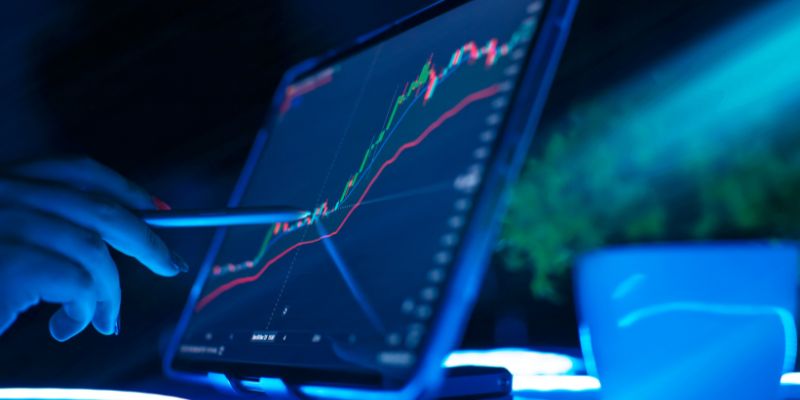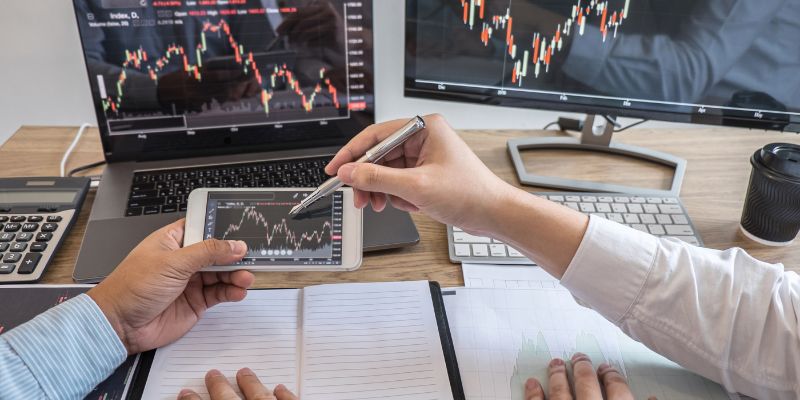What is Forex (FX) Trading and How to Trade Currencies in Forex?
May 20, 2024 By Triston Martin
Forex is considered to be the worlds most liquid market and also the biggest market for trading currencies. Forex (FX) trading is set up completely online on an electronic setup and has no physical location, making it the largest market of the global village called the interest. But how can you trade currencies in Forex? In this article, we are going to discuss everything you need to know about what is Forex (FX) trading and how it works.
What is Forex Trading?
Forex Trading is defined as foreign exchange trading where you can exchange one currency for another online. FX is currently the worlds biggest market place in terms of trading, without having any dedicated physical location. Individuals who trade in Forex mostly involve investors, companies, banks, and major firms who contribute to trading $6.6 trillion worth of currency every day.
Forex is also known to be the worlds most liquid market, and it is open 24 hours a day, 7 days a week. However, there is an exception for holidays like Christmas or Easter. Still, there is some exception for holidays as Forex trading is done worldwide. However, the trading volume significantly reduces over the holidays.

How Does Forex Trading Work?
Trading in the Forex market involves various techniques in order to find the best entry and exit points. But even before that, there are some terms and rules in Forex that you must understand, especially if you are planning to do Forex trading on your own.
Forex Pairs
Forex Pairs represent the set of two currencies that you are willing to exchange against each other for their value. Since Forex is a global market, there are hundreds of pairs that you can make to trade in Forex. Some of the most popular pairs include the US Dollar against the Euro, the US Dollar against the Japanese Yen, and the British Pound against the US Dollar.
Each Forex Pair has a price attached to it, which defines how much of a currency you need to exchange it. For example, if the Forex Pair of USD and CAD costs 1.2569, then you have to spend 1.2569 CAD to purchase 1 USD. The pair prices are not stable, and they vary on a daily basis. Hence, you have to remain active in the market if you want to get profitable results.
Base and Quote
Taking reference from the pair concept, the idea of base and quote is pretty much the same. The base currency is the one mentioned on the left side of the pair, while the quote currency is denoted on the right side. The base currency denotes 1 value, while the quote currency denotes the price you have to spend to buy that 1 value of the base currency.
For example, if you are willing to trade with the pair of EUR/USD = 1.35562, it means you have to spend 1.355 Euros to purchase 1 USD, as USD is on the right side (quote) and the Euro is on the left side (base).
Pip in Forex
The pip in Forex denotes the movement of one digit in the 4th decimal point of the currency pair. For example, if the EUR/USD = 1.35562 changes to 1.35572, it means it has moved a single pip. However, if you are trading in JPY, the pip changes at the second point of the decimal. If the pip price changes at the first decimal point, then it is called a pipette.
Lot in Forex Trading
All the currencies on Forex are traded in lots, which represents the currency batches used to standardize Forex traders. Since the Forex price changes are not usually significant, the lots tend to be large. For example, a standard lot consists of over 100,000 units of the base currency.

How to Trade Currencies in Forex?
Besides the difference between opening an FX Brokerage account and a traditional stock trading account, the process of getting started with trading currencies in Forex is pretty simple. Here are the steps you need to follow.
Step#1: Find a Broker
The first step involves researching and finding a broker that can make a foreign exchange trading account for you. While finding a reliable Forex broker, make sure to compare their platform capabilities, fees, margins, customer support reliability, and regulatory compliances. Once you have found a suitable broker, you are good to open an account.
Step #2: Opening a Forex Trading Account
To create a Forex trading account, you may have to provide your personal credentials and information to your Forex broker. You must provide your full name, identification address, tax ID number, and details of your financial background. In some cases, you may have to answer some questions about investment goals.
Step #3: Identity Verification
Your Forex broker will verify your identity by checking your credentials on the license, passport, or government-issued ID card. You also may have to provide a copy of utility bills or bank statements to verify your present address.
Step #4: Fund the Forex Account
The next involves funding your Forex account by transferring some amount to begin with the trading. Keep in mind that you have to fund your Forex account once it has been verified and approved. Some Forex trading brokers may allow you to start investing as low as $100.
Step #5: Research Opportunities
The next step is the real effort where you have to find the right currencies which you want to exchange on the Forex trading. Once you have identified your Forex pair, you have to keep a check-in balance on the trade size and trade management. Make sure to determine the right timing points and price levels to enter or exit.
Conclusion
Forex trading is much like stock trading in which you have to remain active with the research while keeping an eye on the market values. It is all about the timings of entering and exiting the market in order to get profitable returns. Hopefully, this article has provided you with detailed insights into what is Forex trading and how does it work.

Dec 01, 2024 Verna Wesley

Dec 03, 2024 Pamela Andrew

May 20, 2024 Triston Martin

Nov 26, 2024 Georgia Vincent

Jan 27, 2024 Triston Martin

Feb 07, 2024 Triston Martin